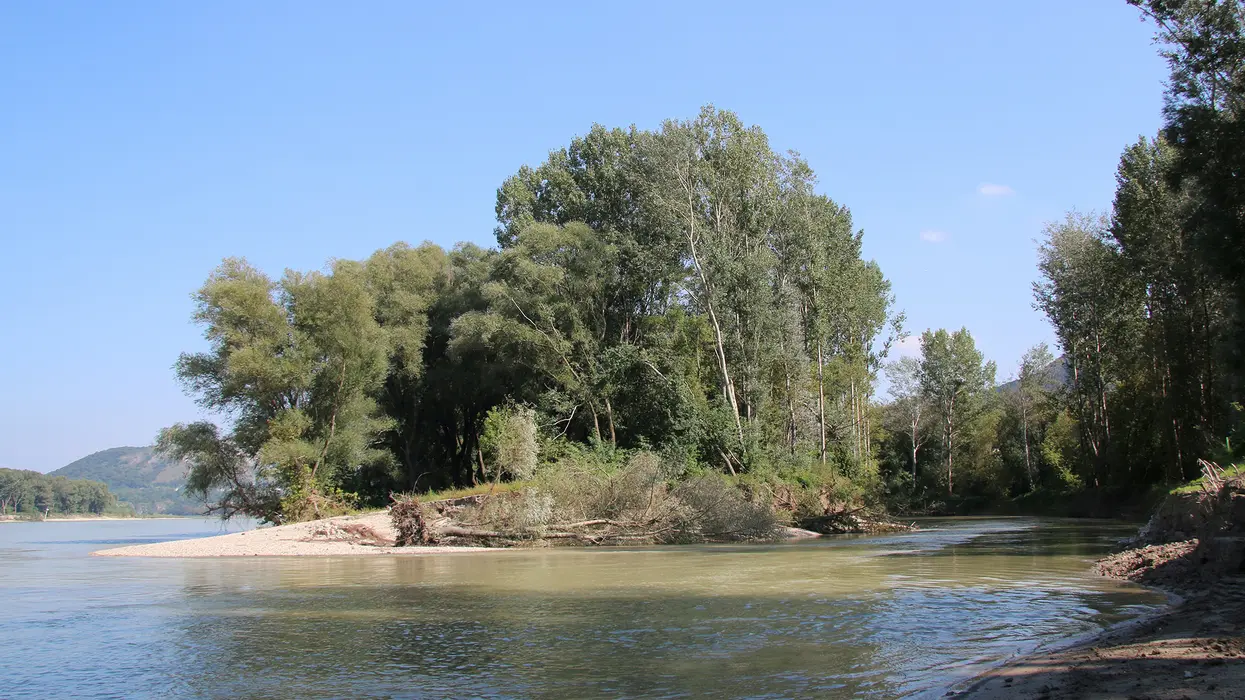The Pilot Project Bad Deutsch-Altenburg (PP BDA) was the sixth pilot project implemented in the Donau-Auen National Park. The objective was to test river engineering measures which are to be implemented along the entire stretch of the Danube between the Freudenau power plant and the Austrian national border.
All types of measures were implemented on-site for the first time in the three-kilometer-long project section (river kilometres 1887.5 - 1884.5): renaturation and lowering of the riverbank, reconnection of a side-arm, optimisation of low water regulation and granulometric improvement to stabilise the riverbed. Especially the latter was the focus of this pilot project. After completing computer simulations and experiments in the hydraulic engineering laboratory at the Vienna University of Technology, implementation along a short stretch of the river was the next logical step.
The pilot project served not only to test river engineering and construction processes, but also to develop and test technical and ecological assessment procedures.
The pilot project was developed within the framework of the Integrated River Engineering Project on the Danube East of Vienna and thus followed its integrative planning approach. The project put the planning principles developed by the interdisciplinary management committee into practice, thereby enabling a step-by-step process of learning from the river.
Construction was carried out between February 2012 and July 2014. Since then, data regarding the impact of the project’s measures have been collected and analysed as part of the post-monitoring process. In order to reduce sedimentation in this area of the fairway and to reduce maintenance costs, a number of groynes located at the beginning of the project stretch were slightly extended and raised in early 2017.
Project results
The realization of the Pilot Project Bad Deutsch-Altenburg enabled the stabilisation of the riverbed in the experimental section. Since the end of the construction period there has been no further erosion of the riverbed. Through the reconnection of the Johler side-arm, the first side-arm in the national park where water flows through all year round has been re-established. Restoration of riverbanks has created natural shore areas. These newly created habitats were immediately embraced by the animal world of the Danube floodplains. Scientific support was responsible for the evaluation of the pilot project and the knowledge gained from it is an essential basis for the design of the Catalogue of Masures. Accompanying research was carried out by the University of Natural Resources and Applied Life Sciences Vienna (BOKU), the Vienna University of Technology (TU Wien), the University of Vienna and Wassercluster Lunz (a non-profit aquatic ecosystem research center). The specially designed Christian Doppler laboratory "IM Fluss" was responsible for a part of the abiotic investigations and used the results of open-air measurements for their research activities. In addition to viadonaus’s experts, specialized companies were also involved in the monitoring.
Accompanying Stakeholder Forum
The implementation of the Pilot Project Bad Deutsch-Altenburg was accompanied by a stakeholder participation model. Affected and interested groups thus had the opportunity to participate in the concrete design and evaluation of the project within its legal framework.
Following the first presentation and discussion of the stakeholder participation model on October 5th 2011, a total of twenty meetings took place. At the last meeting held on 19th January 2015, a joint final statement was published. The evaluation of the stakeholder forum provided an excellent testimony to both the participation model and the Pilot Project Bad Deutsch-Altenburg.
Find out more in our project film "Learning from the River".
The Pilot Project Bad Deutsch-Altenburg was co-financed by the European Union within the framework of the Trans-European Transport Network (TEN-T).


